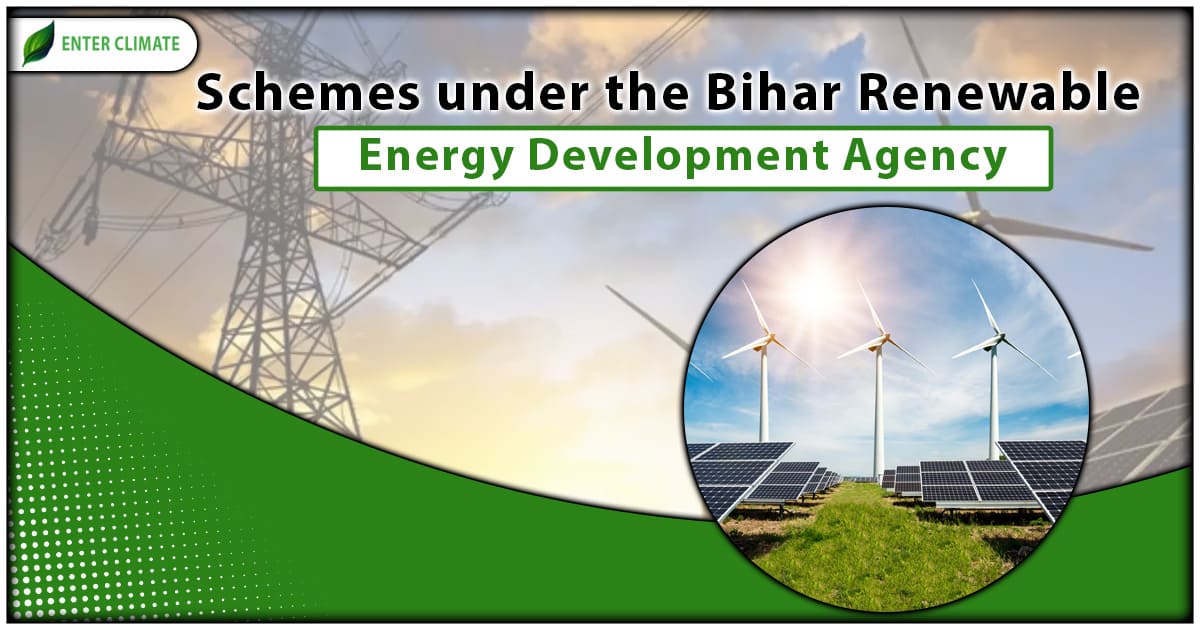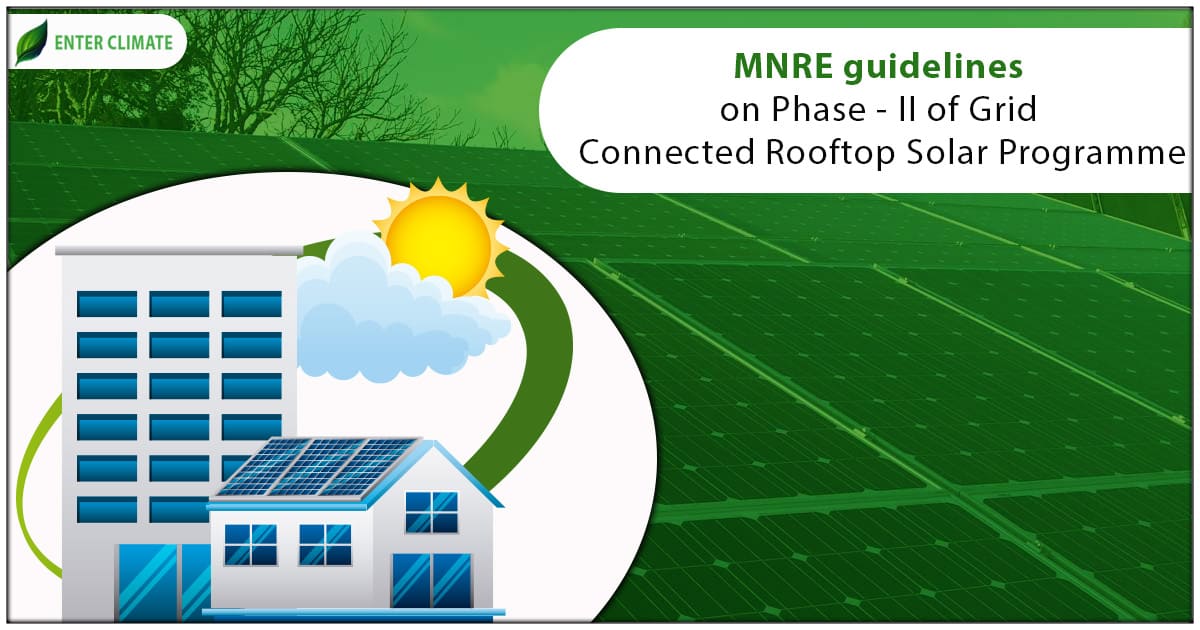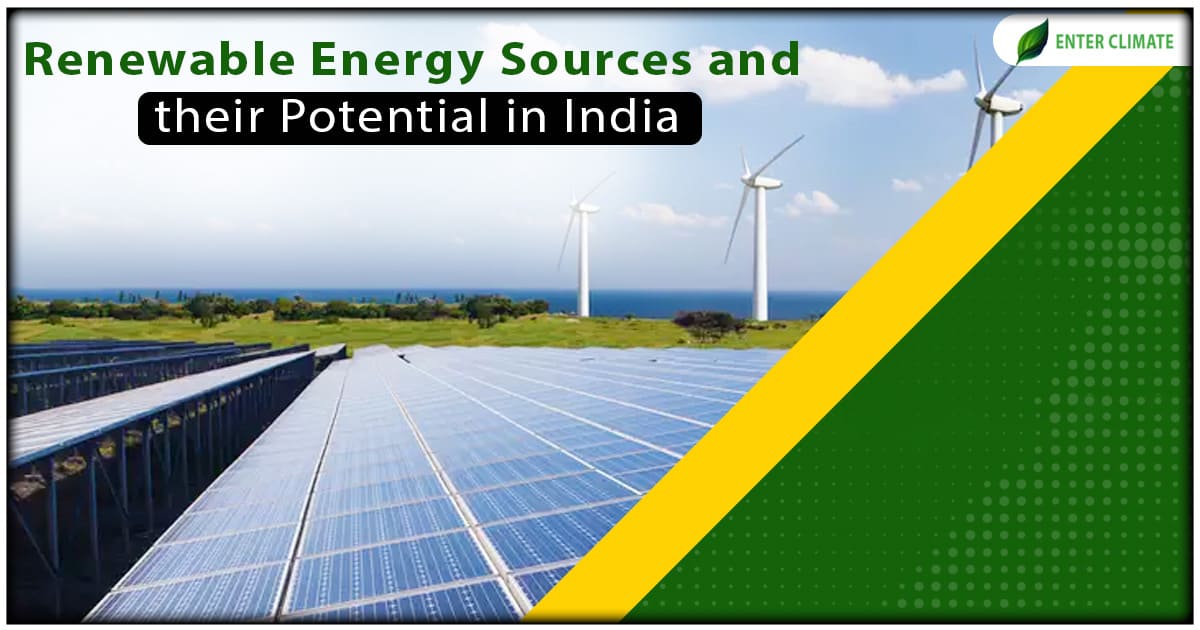Schemes under the Bihar Renewable Energy Development Agency
 11 Aug, 2023
11 Aug, 2023 
India houses 15% of the global population and boasts one of the most rapid economic expansions. The escalating GDP translates to increased earnings for the populace, fostering greater aspirations for an improved quality of life. Concurrently, a significant disparity exists between energy demand and supply within India. While the nation possesses substantial domestic energy resources, a substantial portion of its energy consumption, especially regarding Crude Petroleum, relies on imports. The nation’s Energy Sector hinders its infrastructural advancement and holistic progress. Energy and peak deficits are prevalent, and losses in transmission and distribution persist at disproportionately high levels.Through these concerted efforts, the Bihar Renewable Energy Development Agency sets an inspiring example for other regions, highlighting the potential of renewable resources to meet energy demands while safeguarding the environment for future generations.
Key points in Bihar Renewable Energy Development Agency (BREDA)
The main ideas of the Bihar renewable energy development agency are as follows:
- To investigate the potential of Renewable Energy Sources.
- To conduct research for resource identification.
- To back Energy Generation using renewable choices.
- To aid the Indian and Bihar governments in shaping policies for Renewable Energy Sources.
- To disseminate information and raise public awareness through training, publishing, exhibitions, seminars, and conferences.
- To encourage private sector Renewable Energy power projects by establishing favourable policy conditions.
- To create and implement comprehensive Energy Conservation and future energy usage programs.
- To support widespread distribution and marketing of independent Renewable Energy devices.
- To analyse the environmental impacts of all energy-related procedures.
- To establish an Energy Resources Center responsible for compiling energy-related information.
- To develop and support Documentation Services centred on energy and specifically renewable energy.
- To create Communication and Education initiatives to broadly disseminate energy and environmental concerns.
Bihar Renewable Energy Development Agency
The renewable energy[1] sectors in Bihar’s renewable energy development agency are as follows:
Solar PV
Solar Photovoltaic (PV) technology facilitates the direct conversion of sunlight into electrical energy. Photovoltaic cells, commonly referred to as solar cells, are employed to transform light particles (photons) into electricity. Most commercially accessible solar cells are crafted from high-purity silicon wafers. Alternatively, solar cells can be fabricated from various materials such as thin silicon films encompassing both multi-crystalline and amorphous structures, cadmium telluride (CdTe), copper indium diselenide (CIS), gallium arsenide (GaAs), among others. These distinct solar cells can be interconnected to form a solar photovoltaic module.
The electrical performance of a solar cell or PV module is quantified in terms of peak watt (Wp), representing the maximum power output attainable from the PV module under Standard Test Conditions (STC), which entail:
- Sunlight exposure at 1000 watts per square meter
- Spectral distribution corresponding to Air Mass 1.5
- Measurement conducted at an ambient temperature of 25°C
A solar photovoltaic (PV) system encompasses an assemblage of solar modules organised in series/parallel configurations coupled with an inverter, interface electronics, mechanical supporting structure, cables, switches, and related components.
Wind Energy
Wind energy is an eco-friendly method and a consistent defence against escalating power costs. The benefits are as follows:
- The most cost-effective origin of electrical power.
- Minimal equity participation is needed, and affordable debt is readily accessible for wind energy projects.
- A project with the swiftest payback period.
- An exceptionally rapid power project with the shortest incubation period, employing a modular framework.
- Operating and maintenance (O&M) expenditures are economical.
- No marketing uncertainties, as the product is electricity.
- A project demands no workforce investment.
- The primary benefits of electricity generation through wind energy include:
- The initial expenses are akin to conventional power plants. For a wind farm, the initial investment ranges from 4.5 to 6.85 crore rupees per megawatt, contingent on turbine type, technology, size, and location.
- Construction duration is abbreviated.
- Fuel costs are nil.
- Operational and maintenance expenses are exceedingly low.
- Capacity expansion can be incrementally achieved.
- There are no detrimental repercussions on the global environment. The entire system is devoid of pollution and ecologically sound.
Bio Energy
Biomass represents a fuel originating from organic substances, serving as a renewable and sustainable energy source employed for generating electricity or alternative forms of power. Biomass functions as an energy reservoir, capable of direct utilisation through combustion for heat generation or following conversion into diverse biofuels. Biomass has the potential for transformation into other functional energy types, including methane gas or transportation-oriented fuels like ethanol and biodiesel. The decomposition of waste materials, along with agricultural and human refuse, results in methane gas emission, often referred to as biogas or landfill gas. Certain crops, such as corn and sugarcane, can undergo fermentation to yield transportation fuel, namely ethanol. Several instances of materials constituting biomass fuels encompass:
- woods;
- remnants from forests;
- select crops;
- animal waste; and
- certain forms of residual waste products.
Energy Conservation in Bihar renewable energy development agency
Energy conservation pertains to methods aimed at diminishing energy utilisation. This goal can be attained through heightened efficiency in energy utilisation, coupled with reduced consumption of energy and/or decreased reliance on traditional energy sources. Energy conservation embodies the act of reducing the volume of energy employed. This objective may be realised by adopting effective energy utilisation, and decreasing energy consumption while attaining comparable outcomes. Alternatively, it can involve curbing the utilisation of energy services. Energy conservation can yield advantages in terms of financial resources, environmental worth, national and personal security, and human comfort. Individuals and entities directly consuming energy might opt for energy preservation to curtail energy expenses and foster economic stability. Industrial and commercial users may seek to enhance efficiency, consequently optimising profits. Energy conservation denotes the reduction of energy volume employed. By promoting energy preservation, one contributes to an environmentally conscious lifestyle that both economises on expenses and contributes to the planet’s well-being. As energy usage is scaled back, efforts are automatically directed toward mitigating the escalation of global warming. The range of strategies available for Energy Conservation includes:
- By harnessing Renewable EnergySources– Renewable energy streams involve natural occurrences like sunlight, wind, tides, vegetation growth, and geothermal warmth. Renewable energy stems from ongoing natural processes and takes various forms, directly originating from the sun or the earth’s internal heat. This encompasses electricity and heat generated through solar, wind, ocean, hydropower, biomass, geothermal resources, biofuels, and hydrogen sourced from renewable materials. Renewable energy replaces conventional fuels in four main domains: electricity production, space heating and hot water supply, automotive fuels, and energy services for rural or off-grid areas.
- Through cogeneration- Cogeneration entails employing a heat engine or power station to generate electricity and useful heat concurrently. All thermal power plants release a certain amount of heat while generating electricity, which is typically dissipated into the environment via cooling towers or flue gas. In contrast, cogeneration captures some or all this by-product heat for heating purposes, either close to the plant or specifically in factories, where the heat can serve as input for other processes.
- By utilising Energy Efficient Devices- Efficient energy usage, often referred to as energy efficiency, aims to reduce the energy input required to provide goods and services. For instance, insulating a building reduces the need for heating and cooling energy to maintain a comfortable temperature. Replacing traditional incandescent light bulbs with fluorescent lights or natural skylights decreases the energy needed for the same level of illumination. Compact fluorescent lights utilise significantly less energy and can last 6 to 10 times longer than incandescent bulbs. Enhancing energy efficiency usually involves adopting more efficient technologies or production methods. Improving energy efficiency is driven by various motives, including cost savings from reduced energy use, financial benefits to consumers, and addressing environmental concerns by reducing emissions.
- Through Green Building Design- Green building design encompasses environmentally responsible and resource-efficient practices throughout a building’s entire lifecycle: from siting and design to construction, operation, maintenance, renovation, and demolition. This involves close collaboration among the design team, including architects, engineers, and clients, at all stages of the project. Green building augments traditional economic, utility, durability, and comfort design considerations. While new technologies continue to emerge to enhance greener construction, the central aim remains to minimise the built environment’s impact on human well-being and the natural world. This is achieved by efficiently using resources such as energy and water, prioritising occupant health, improving productivity, and reducing waste and environmental harm.
- Through Biofuel and Hybrid Vehicles- Biofuel is a type of fuel derived from biological carbon fixation. It encompasses fuels from biomass conversion, solid biomass, liquid fuels, and biogases. Unlike fossil fuels, which have been out of the carbon cycle for an extended period, biofuels are formed from ongoing biological processes. Growing attention to biofuels is spurred by rising oil prices, heightened energy security needs, concerns about greenhouse gas emissions from conventional fuels, and governmental support through subsidies.
Bioethanol is alcohol generated through fermentation, primarily using carbohydrates derived from crops rich in sugar or starch like corn or sugarcane. Additionally, non-edible sources of cellulosic biomass, such as trees and grasses, are being explored as potential materials for ethanol production. While ethanol can serve as a standalone fuel for vehicles, it is commonly employed as an additive to gasoline, enhancing its octane rating and contributing to better vehicle emissions. The use of bioethanol is prevalent in both the United States and Brazil.
The present design of plants does not incorporate the conversion of the lignin component of plant-based materials into fuel constituents via fermentation. Individuals and entities that directly consume energy may opt for energy conservation to lower energy expenses and foster economic stability. Similarly, industrial and commercial users may aim to bolster efficiency to maximise their profits.
Energy conservation denotes the reduction in the volume of energy utilised. It aligns with an environmentally conscious lifestyle by saving money through efficient energy use and contributing to the preservation of the environment. Decreasing energy consumption naturally contributes to mitigating the rise of global warming.
Need for Energy Conservation
The escalating demand for electricity has led to substantial combustion of fossil fuels, resulting in detrimental effects on the environment. In this scenario, the effective utilisation and energy conservation take on vital significance. It is estimated that the implementation of energy efficiency measures and demand-side management practices across India could lead to the preservation of nearly 25,000 MW of power. The significance of energy efficiency and conservation becomes even more pronounced because saving one unit of energy at the consumption level reduces the necessity for new capacity creation by a factor of 2 to 2.5. Furthermore, achieving such energy savings through efficient practices costs less than one-fifth of the expenses incurred in establishing new capacities. Hence, energy efficiency can substantially complement our endeavours to fulfil power requirements while curbing fossil fuel consumption.
The economic progress of a nation is often intricately linked with its energy consumption patterns. Although India stands sixth globally in terms of total energy consumption, it still requires a significant amount of energy to keep in line with its developmental goals. India’s projected economic growth rate is expected to reach 7.4 per cent from 1997 to 2012.
Program and Initiative as per the Bihar renewable energy development agency
The initiatives and projects undertaken by the Bihar Renewable Energy Development Agency include:
- Grid Connectivity Initiative
- Solar Power Endeavor
- Solar Power Plants on the Ground
- Solar Power Installations on Rooftops
- Solar Power Units on Canals/Banks
- Floating Solar Power Installations
- Solar-Powered Water Pumps
- Application of Solar Energy
- BioenergyEndeavor
- Off-grid Connectivity Initiative
- Renewable Energy Certificate (REC) Mechanism
Licenses Approvals Needed for Renewable Energy-Related Projects
Diverse categories of renewable energy enterprises necessitate distinct forms of licenses. Nevertheless, there are several essential licenses, permissions, and papers that are commonly needed, including:
- Incorporation of the Company
- Enrollment with the Renewable Energy Corporation (REC)
- Articles of Association and Memorandum of Association
- Goods and Services Tax (GST) Registration
- Micro, Small, and Medium Enterprises (MSME) Registration
- No Objection Certificate (NOC) for Pollution from State Pollution Control Board or Pollution Control Committee
- Permanent Account Number (PAN)
- Approval from the Chief Electrical Inspector to Government (CEIG)
- Factory License
- No Objection Certificate (NOC)
Conclusion
The Bihar Renewable Energy Development Agency plays a pivotal role in advancing sustainable energy initiatives within the state. By promoting the utilisation of renewable energy sources, such as solar and biomass, the agency not only contributes to reducing the environmental impact but also fosters economic growth and energy security. The agency’s comprehensive approach, encompassing grid-connected programs, solar energy adoption, bioenergy ventures, and off-grid initiatives, demonstrates a commitment to a diverse and resilient energy landscape. It is recommended to take expert guidance to know the exact documents needed for your renewable energy development business and to get the benefits as per the Bihar renewable energy development agency.
FAQs
In 2017, the Bihar State Government introduced the Bihar Solar Policy, intending to encourage the adoption of solar energy within the state. The primary objective of this policy is to attain a solar energy capacity of 3,500 MW by the year 2022.
According to data from the Ministry of New and Renewable Energy, Bihar had accomplished 11% of its renewable energy goal for 2022, while Odisha had reached 23% of its target.
The policy outlines a vision where biomass and bagasse-based cogeneration endeavours will collectively contribute a total of 244 MW by 2022. To secure a consistent fuel supply and maintain viable pricing, the Bihar government will encourage the establishment of captive plantations to support biomass-powered facilities.
By setting up a rooftop solar panel system that operates independently from Bihar’s grid, you might eliminate the need to depend on the state’s electricity provision for power. Additionally, you can take advantage of the rooftop solar subsidy offered in Bihar.
The village of Dharnai in Bihar’s Jehanabad district marked the inauguration of a 100-kilowatt solar mini-grid, providing electricity to the village. Dharnai had been without electricity since 1981. The project was highlighted as a transformative development for the state.
A 5-kilowatt solar system can power a 2-ton air conditioner along with 2 fans, 8 LED lights, and 1 refrigerator effortlessly.
For a 5-kilowatt hybrid inverter, you would need a battery with a minimum capacity of 450 to 500 ampere-hours at 12 volts. Alternatively, you can opt for two separate 12V batteries with a capacity of 250 ampere-hours each, which would sustain the system for approximately 30 to 45 minutes.
Electricity production of a solar system decreases when there is rain or cloud cover. Nonetheless, the system continues to generate power. Solar panels are designed to be waterproof, so there is no need to worry about water damage.
Solar energy systems exclusively function during daylight hours. This is attributed to the fact that the sun’s energy plays a pivotal role in how a solar panel converts light into electrical energy.
Based on the most recent data from the Central Electricity Authority (CEA), the overall installed capacity of renewable energy in Bihar stands at 386 MW.
Read our Article: Renewable Energy Sources And Their Potential In India













